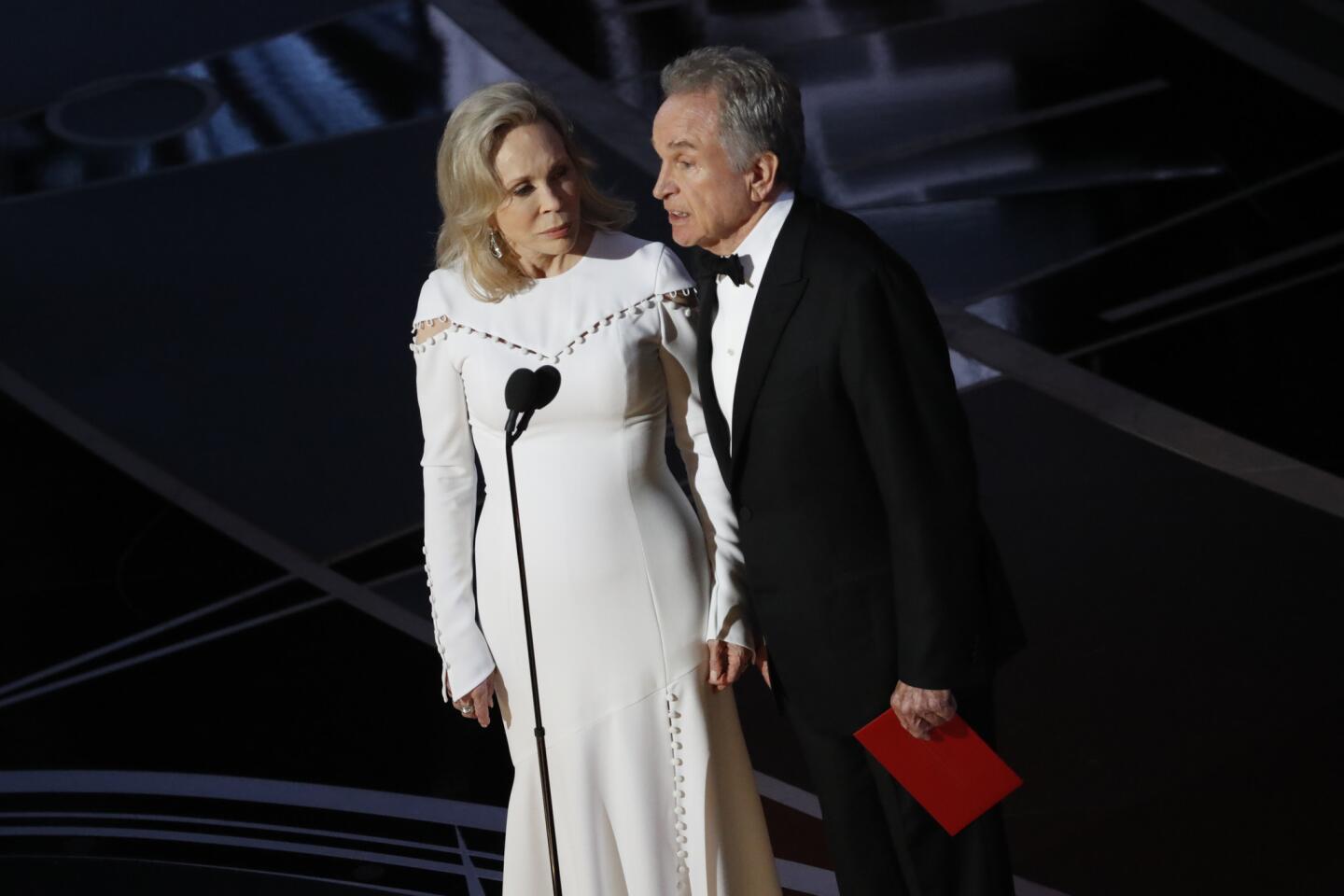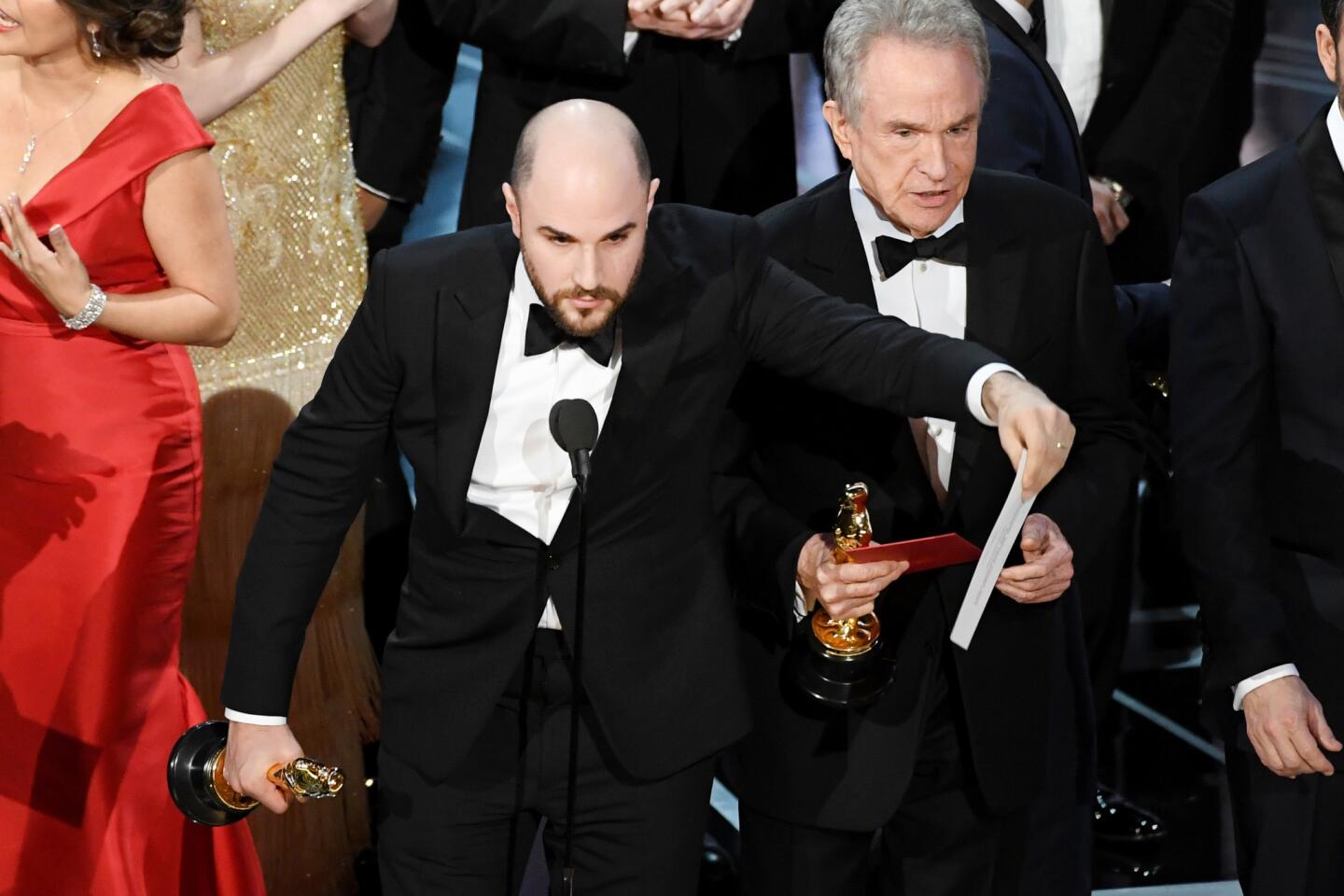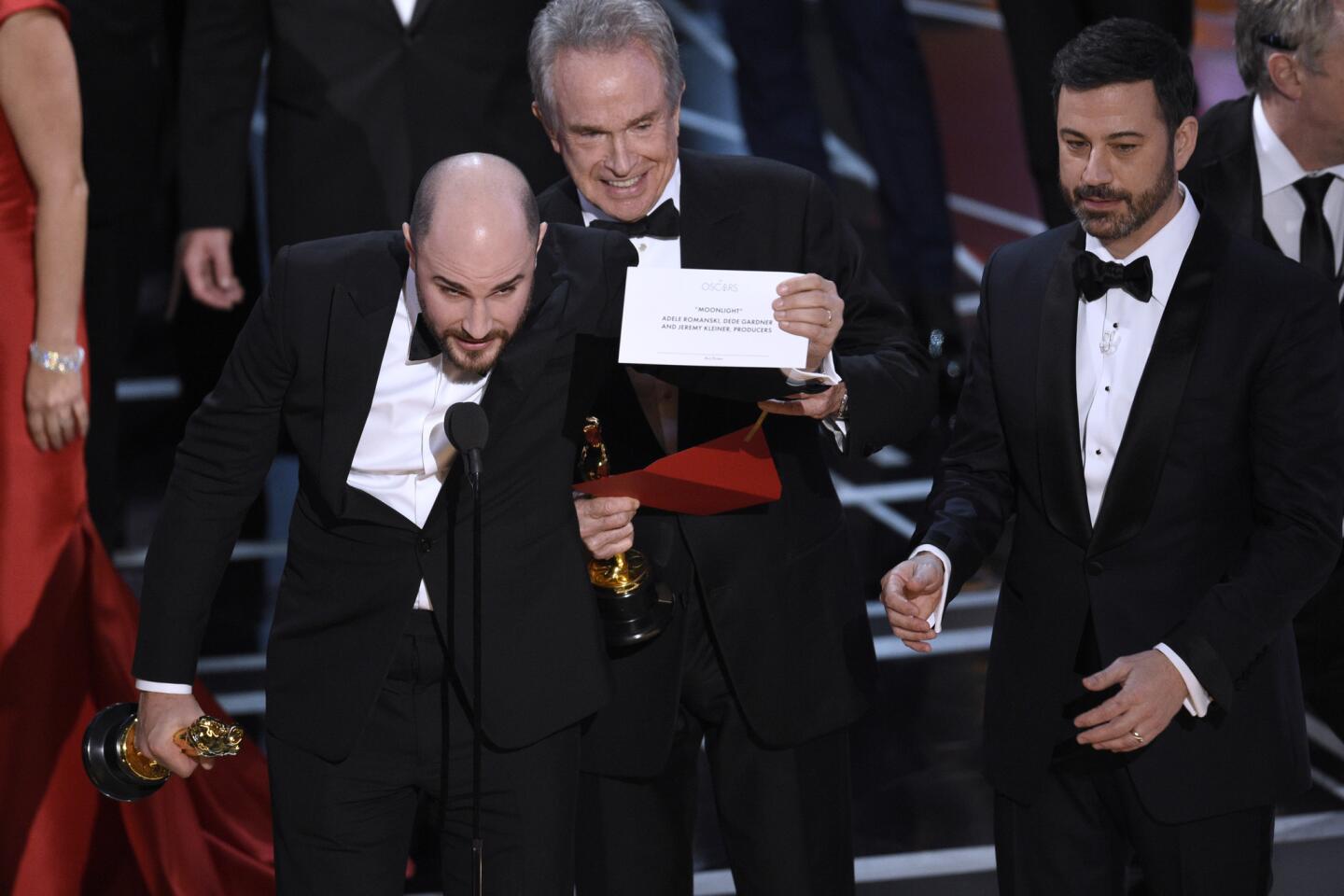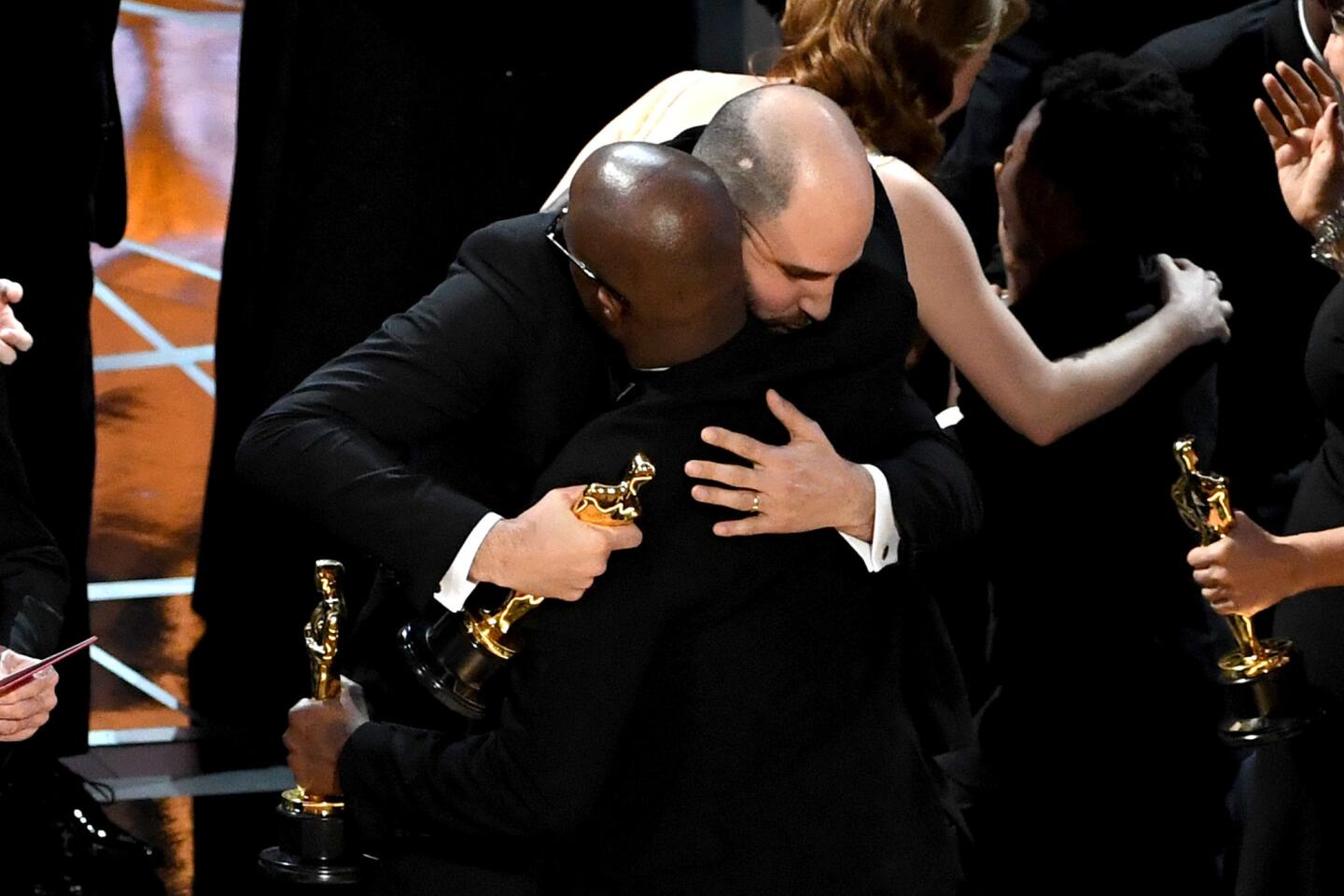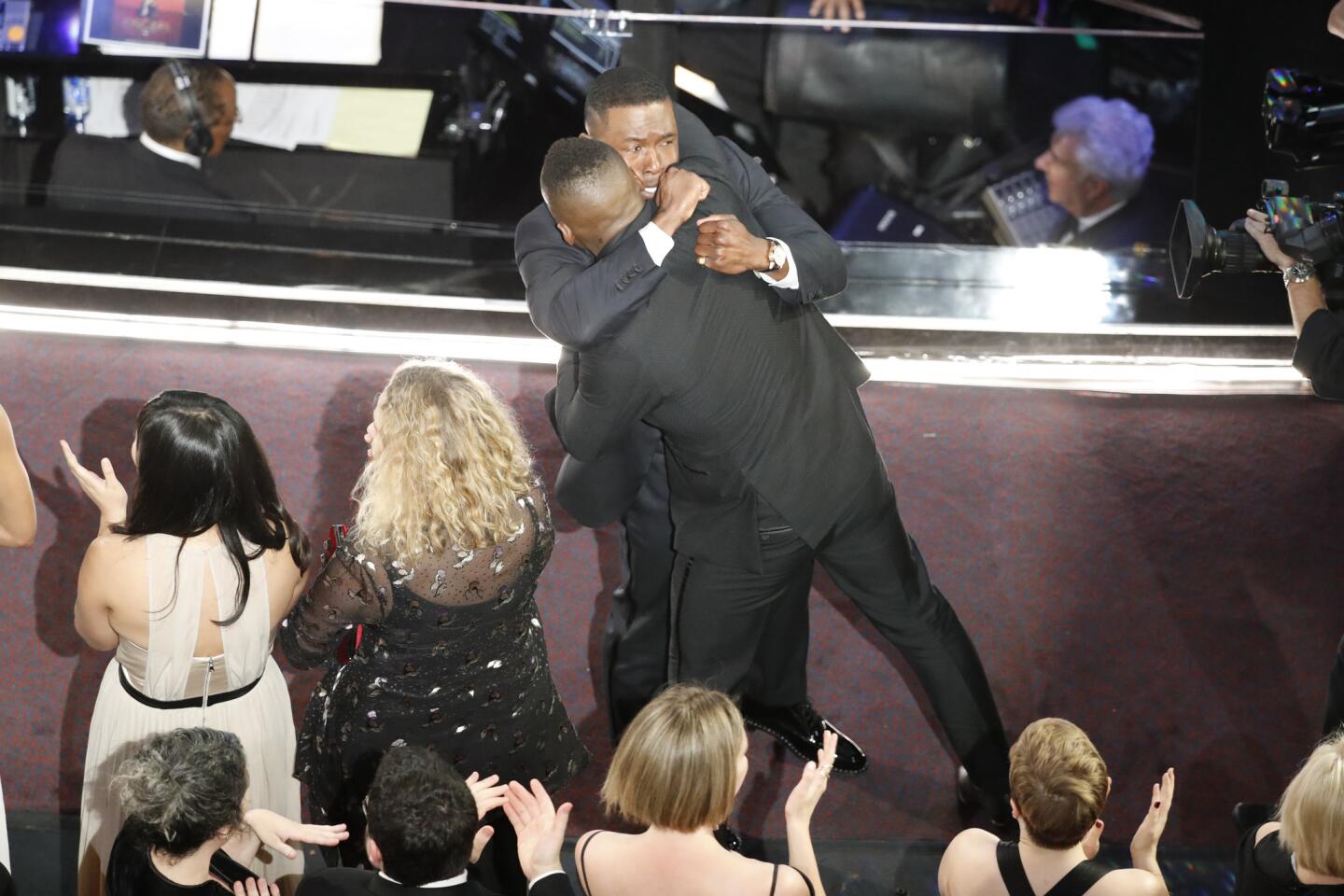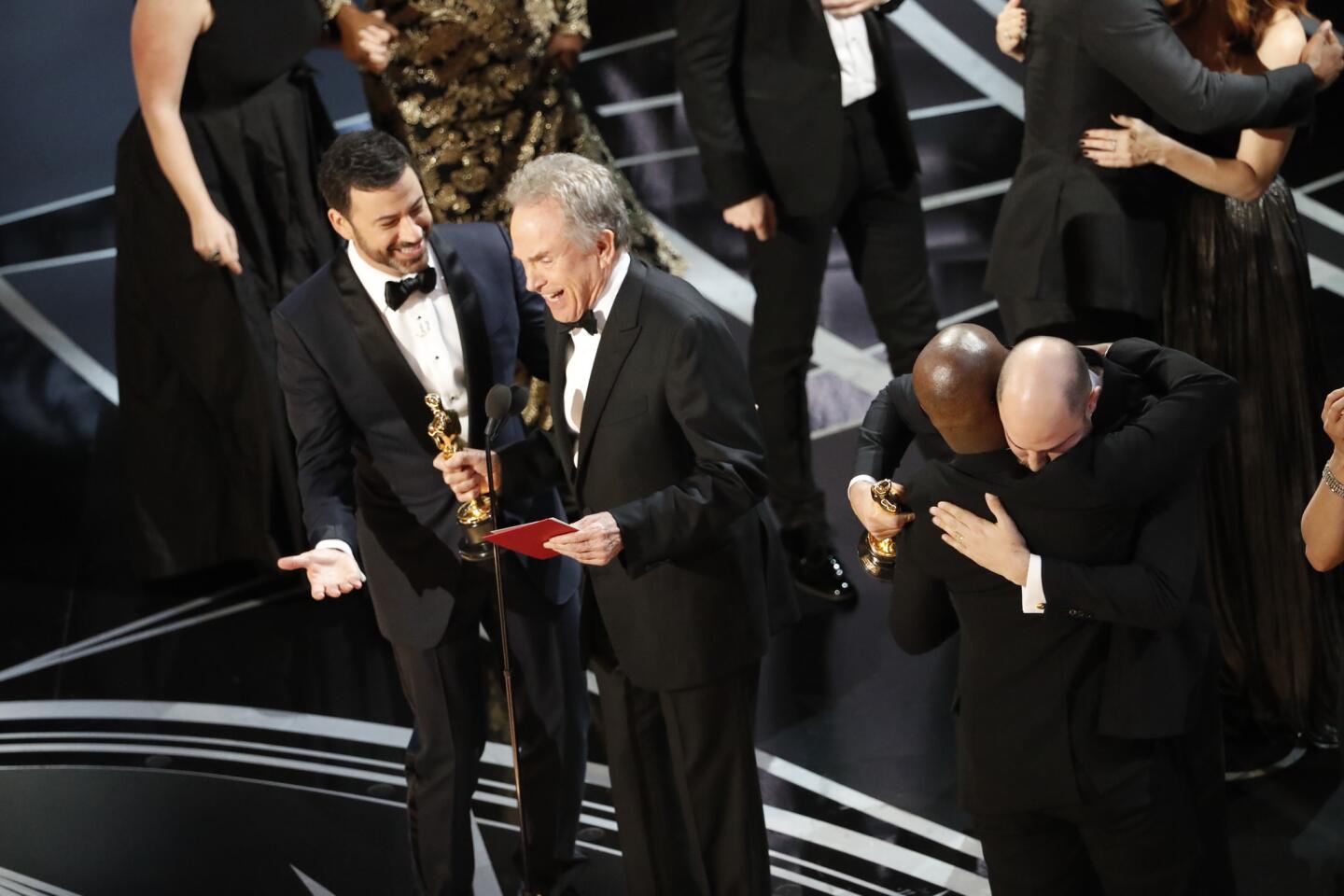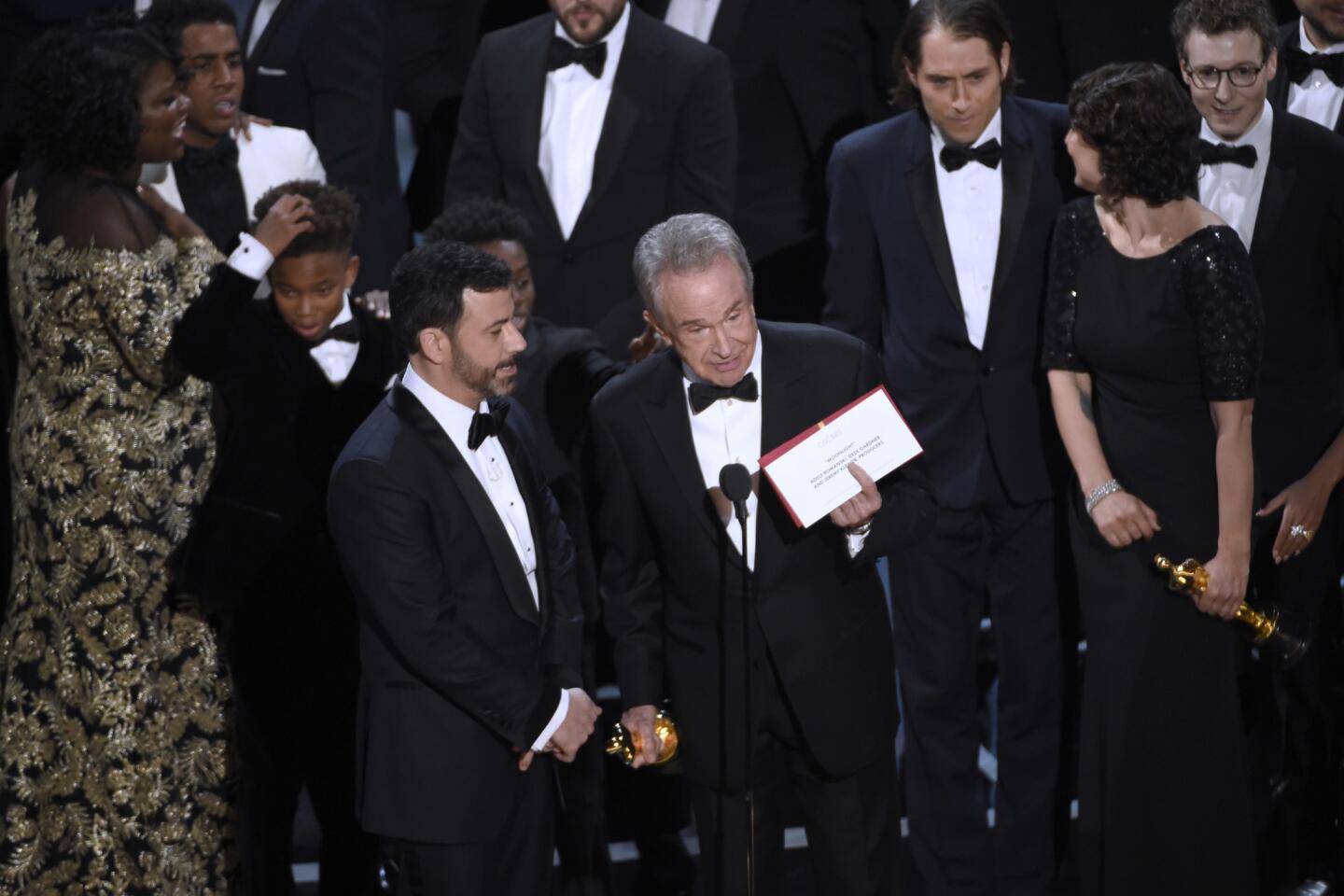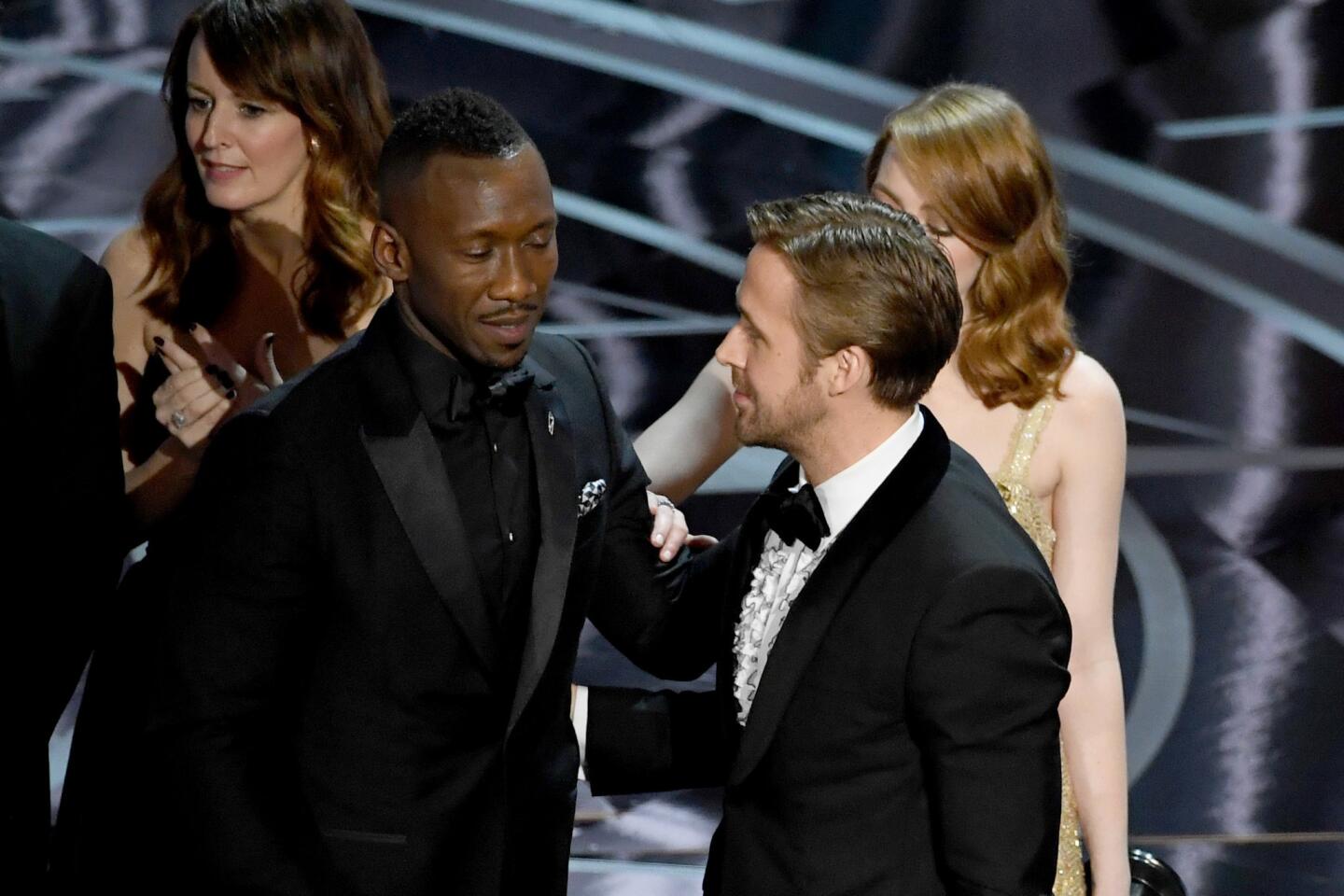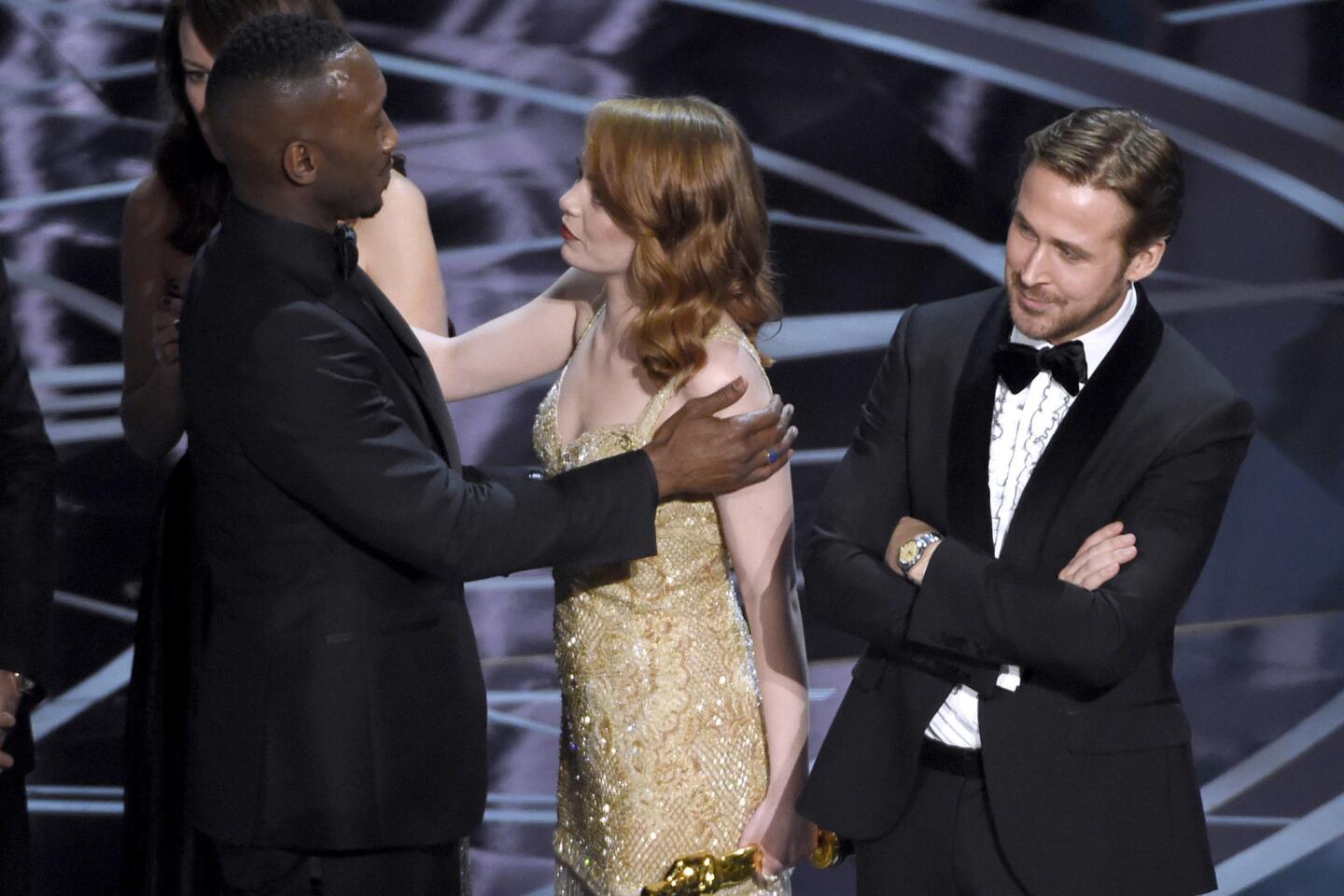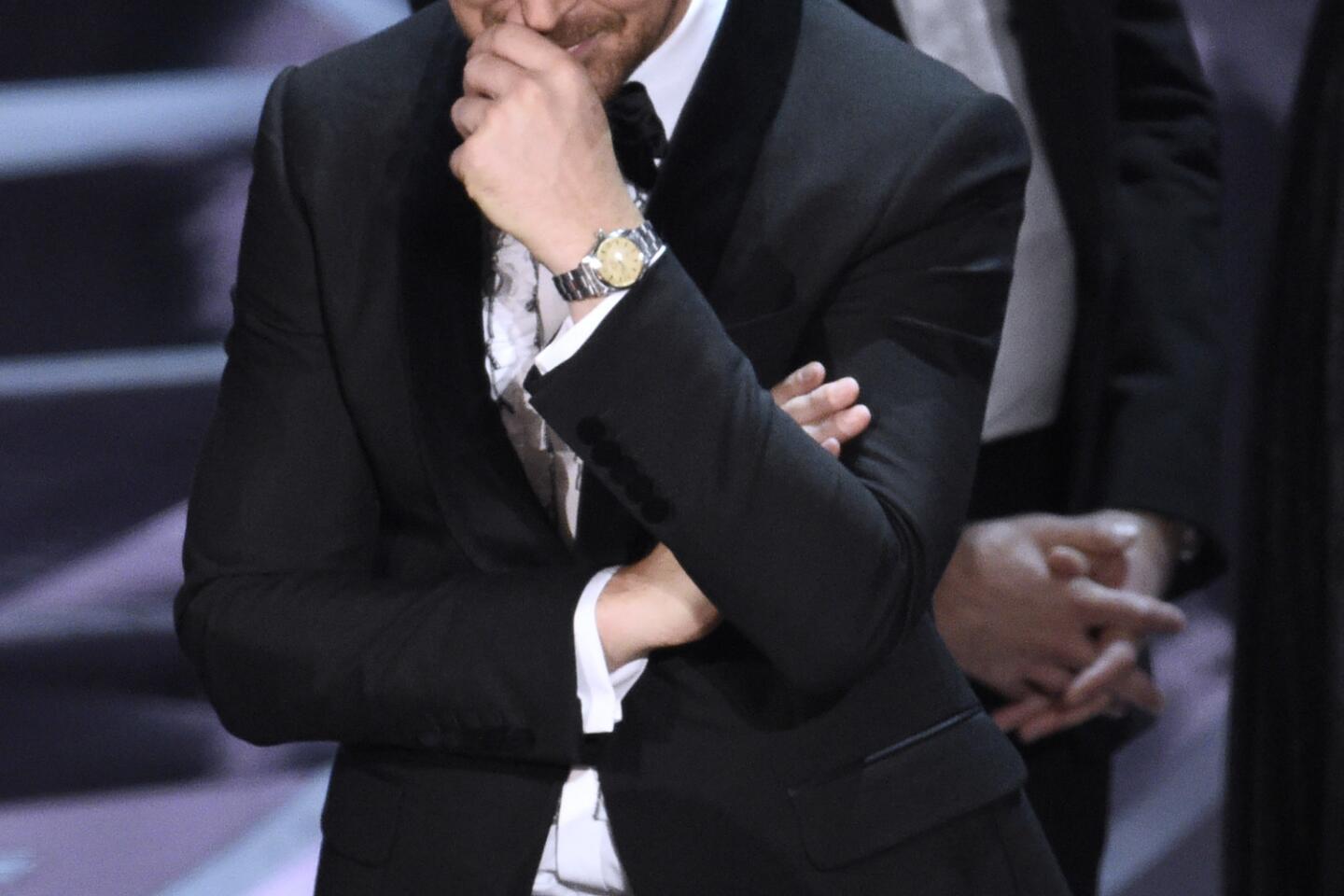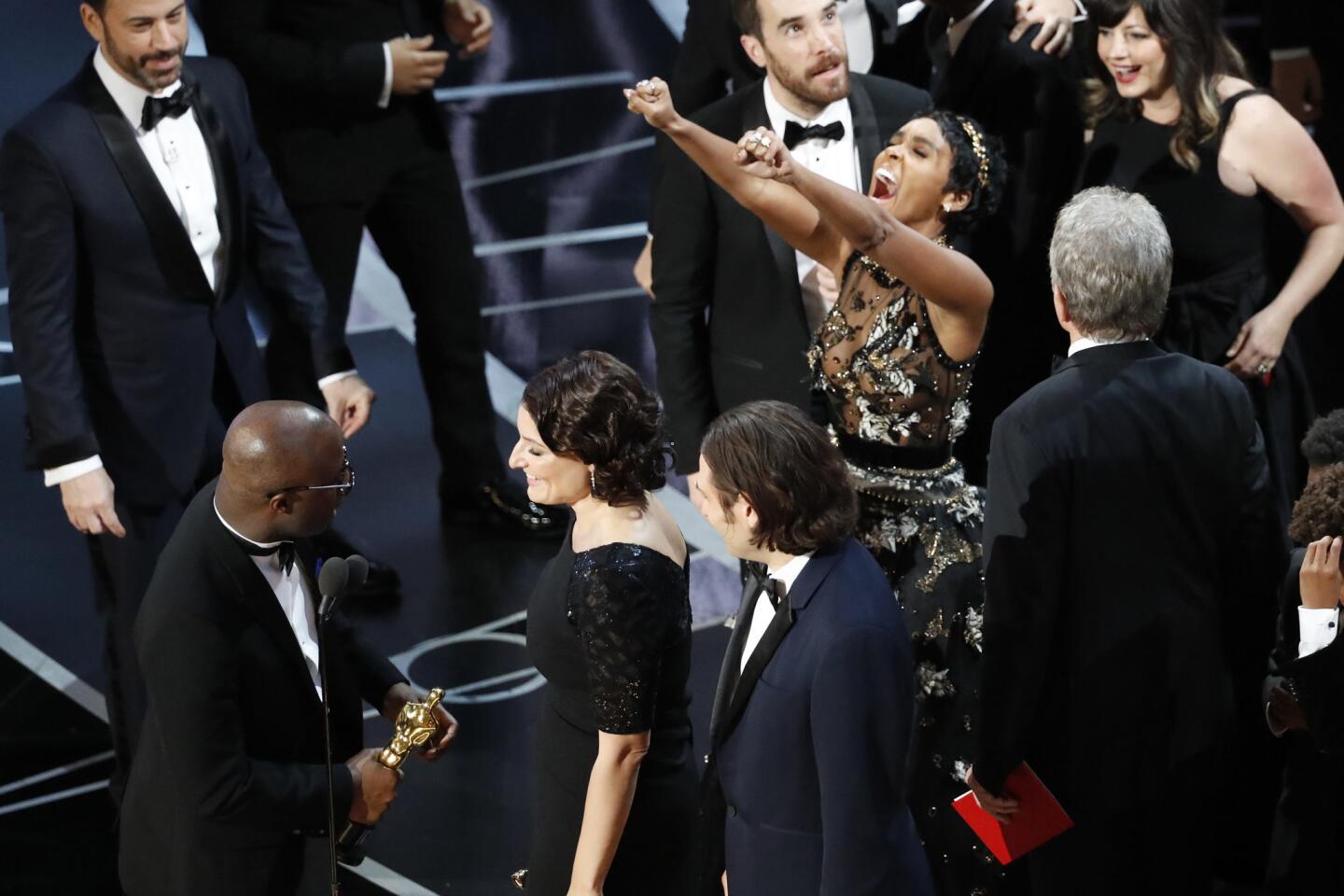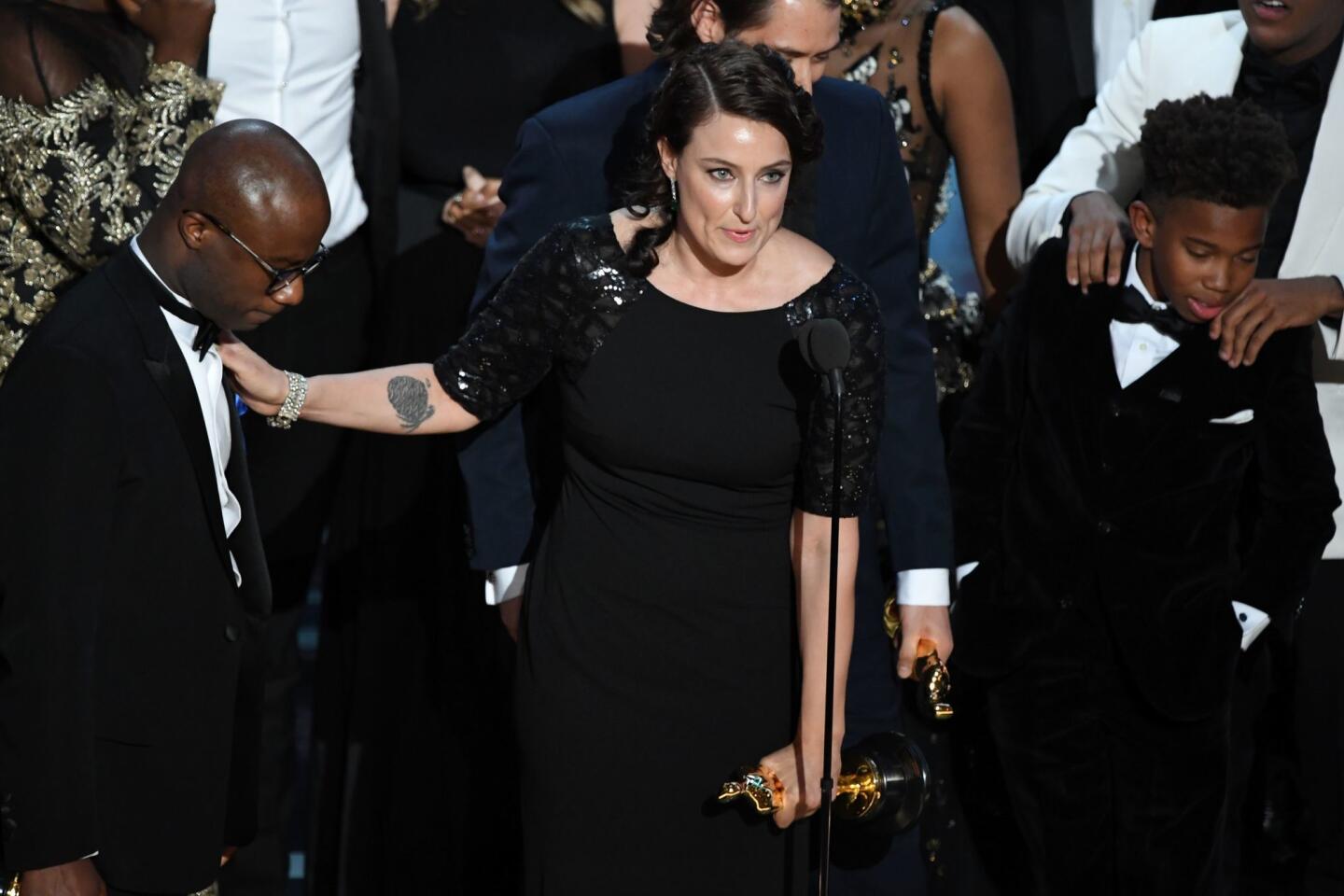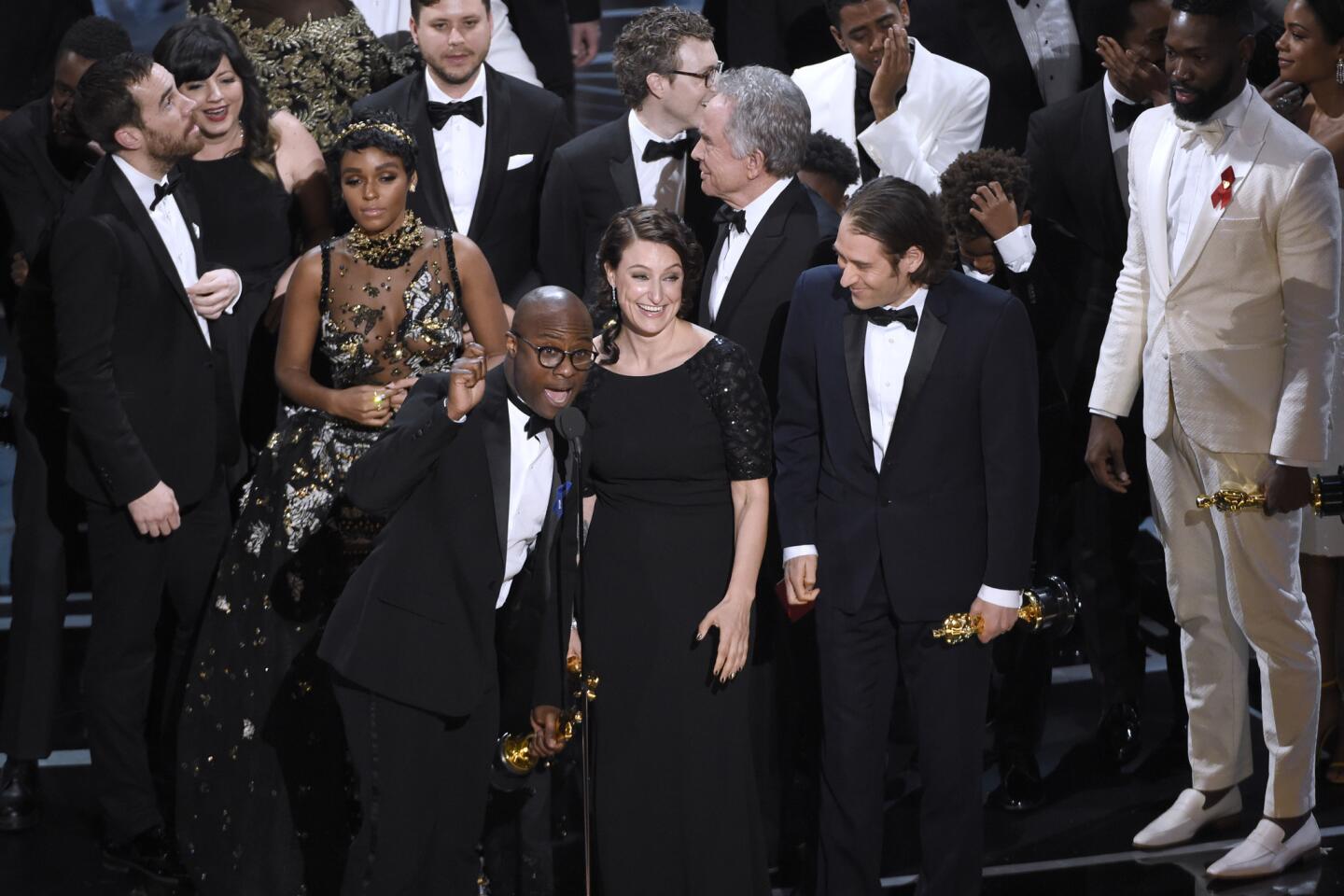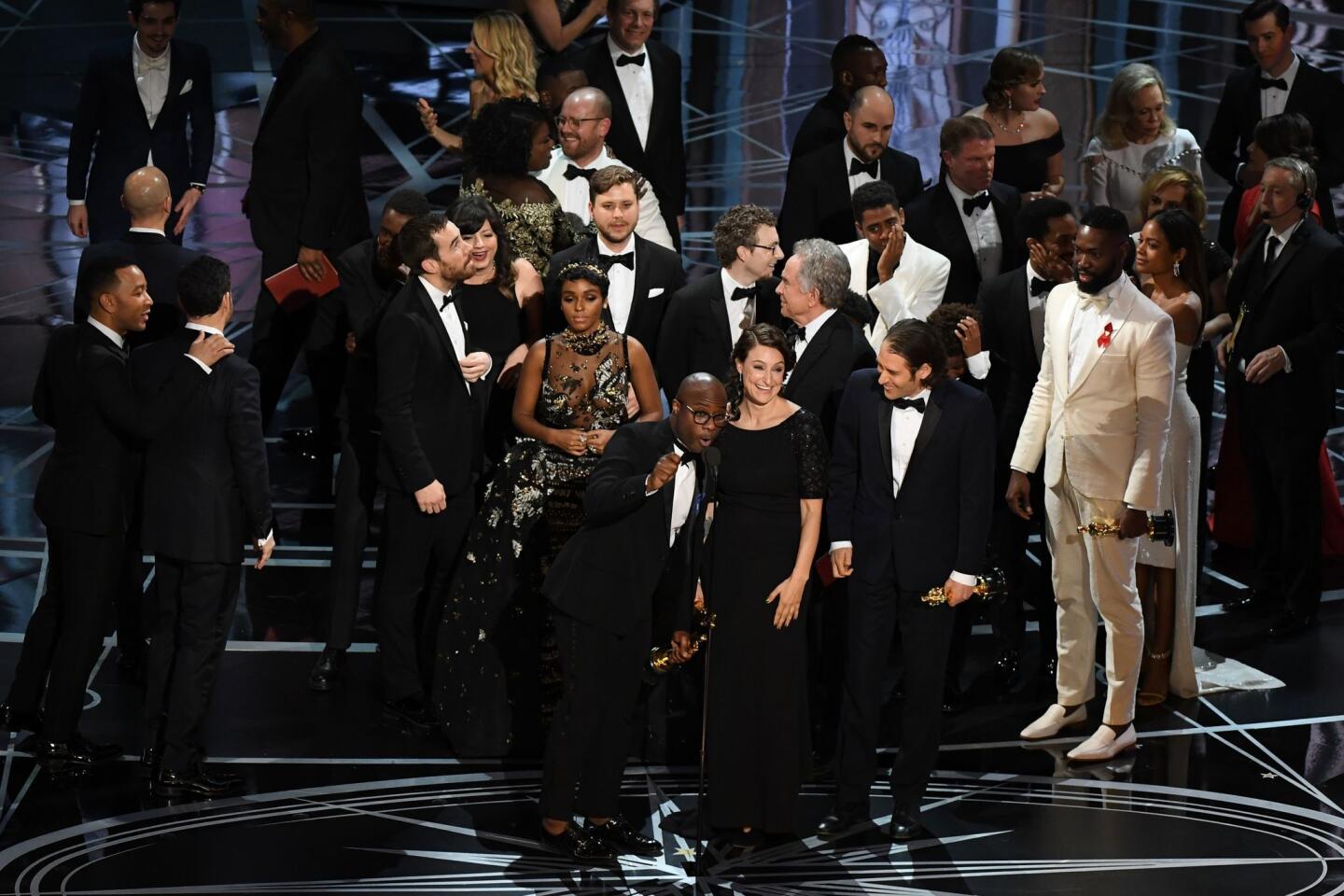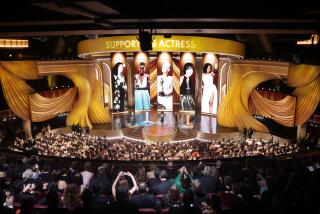Gold Standard: How ‘Moonlight’ won the Oscar for best picture
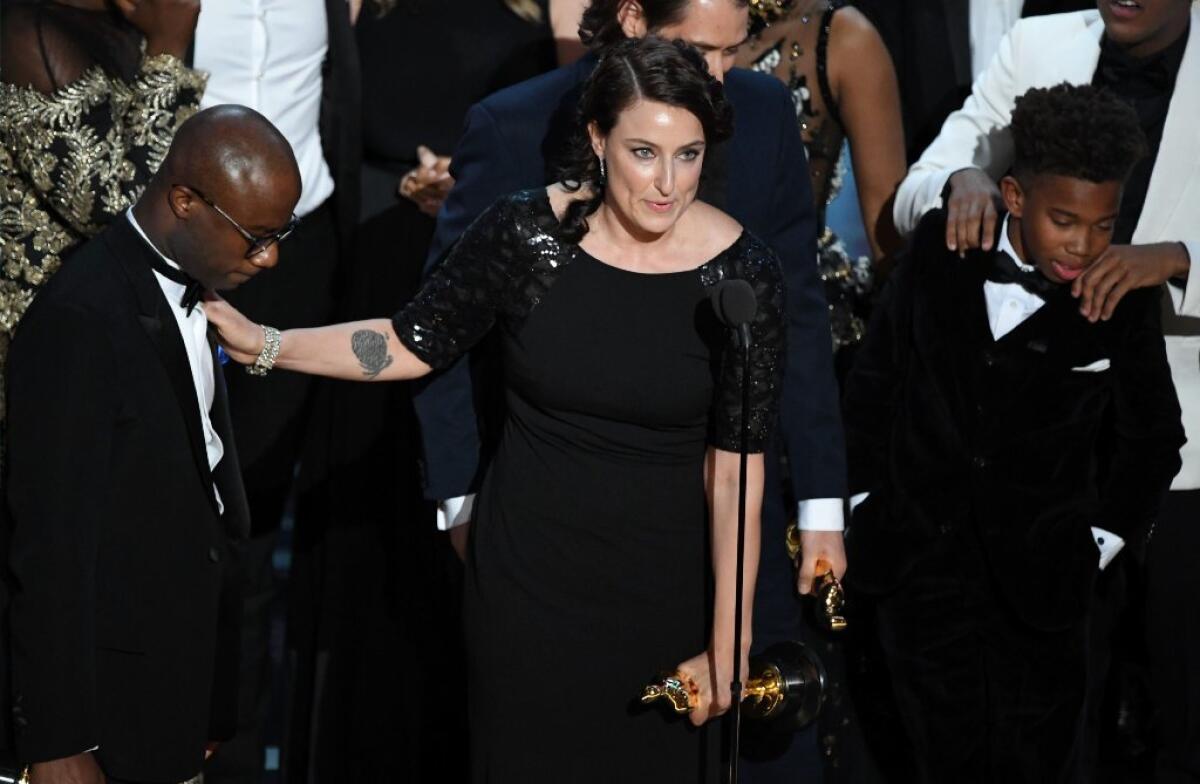
- Share via
When “La La Land” lost the costumes Oscar, it wasn’t a big deal. When it didn’t take either of the sound categories, that raised an eyebrow or two. Then, after it took its first Oscar for production design, it lost film editing. But that Oscar has gone to only one best picture winner this decade. So it was still going to win, right?
It wasn’t going to win. In one of the most stunning upsets in Oscar history, Barry Jenkins’ exquisite, emotional coming-of-age story, “Moonlight,” took the best picture Oscar … minutes after Faye Dunaway gave the award to “La La Land.”
That’s right. Dunaway and Warren Beatty presented the best picture award to the L.A.-set musical and its producers. Jordan Horowitz, Marc Platt and Fred Berger gave heartfelt acceptance speeches, spreading the thank yous like flower petals.
But just as Berger, the last “La La Land” producer to speak, was finishing his remarks, confusion broke out on stage and it was revealed that “Moonlight,” not “La La Land,” was the actual winner. (Beatty: “I opened the envelope and it said Emma Stone … I wasn’t trying to be funny.”)
Full coverage: 2017 Academy Awards »
And Damien Chazelle’s musical, the movie that every pundit picked for the top prize, ended up taking just six Oscars for its 14 nominations.
How did “Moonlight” win?
There had been talk that, in these politically charged times, many Academy of Motion Picture Arts and Sciences members were loathe to reward “La La Land,” a film that many saw as slight and nostalgic, not to mention another in a long line of Oscar contenders that celebrated the magic of movies and those who make them. After “Birdman,” “Argo” and “The Artist,” did the movie industry need to pat itself on the back … again?
In “Moonlight,” academy members had a strong alternative – a film about seeing people different from you and understanding them, empathizing with them and connecting with them. Fundamentally, “Moonlight” is about the necessity of human connection. That’s one reason why audiences related and responded to Jenkins’ film, turning the modest movie into an indie hit.
And while academy members were voting from Feb. 13-21, there was a fair amount of buzz building toward “Moonlight.” Actor-filmmaker Mark Duplass wrote an open letter to academy members urging them to vote for Jenkins’ film, calling it “a bit of a miracle.”
“It’s fair to say that it’s an important film,” Duplass wrote. “Not important in the ‘eat your vegetables and see this important art film even though it’s painful to watch’ way. The film is important because it is actually not a niche film. It is not just for people who like movies that feature marginalized characters who aren’t often featured in leading roles. The film is important because it is a beautiful, sweet, open love letter to the core human values that connect us all. It is important because it reaches beyond its specific characters and tells the story of all of our dreams and collective life experiences. It simultaneously tells a harsh truth and, miraculously, does it with an air of hope.”

“Moonlight” won the best picture Oscar after a botched announcement threw the ceremony into chaos.
The best picture Oscar is voted on via a preferential ballot. Academy members rank the nominated movies in order. PricewaterhouseCoopers accountants sort the ballots based on members’ No. 1 votes. They eliminate the movie with the fewest first-place votes, giving those votes to each ballot’s second-ranked film. The process continues — smallest stacks eliminated, votes redistributed to the next choice down — until one movie has at least 50% plus one of the votes.
Here’s how that process might have given “Moonlight” the best picture Oscar. “La La Land” clearly had support among academy members. It would not have earned 14 nominations and won six Oscars otherwise. But its backing among voters turned out to be shallow. And when the stacks of lower-ranked movies – presumably “Hacksaw Ridge,” “Hell or High Water” and “Arrival” – were eliminated, supporters of those films had “Moonlight” ranked higher than “La La Land.”
And as their votes were redistributed, “Moonlight’s” stack grew and grew, until it had the requisite 50% plus one.
What’s funny is that moments before he presented the best picture Oscar with Dunaway, Beatty said the “goal in politics is the same as our goal in art – to get to the truth.”
And get to the truth they did — it just took a little longer.
Twitter: @glennwhipp
ALSO:
‘Oh my god, he got the wrong envelope’ -- backstage during the Oscars’ best picture chaos
Academy Awards 2017: Complete list of Oscar winners and nominees
How could the best picture mix-up happen? Duplicate cards await on both sides of the stage
More to Read
From the Oscars to the Emmys.
Get the Envelope newsletter for exclusive awards season coverage, behind-the-scenes stories from the Envelope podcast and columnist Glenn Whipp’s must-read analysis.
You may occasionally receive promotional content from the Los Angeles Times.
